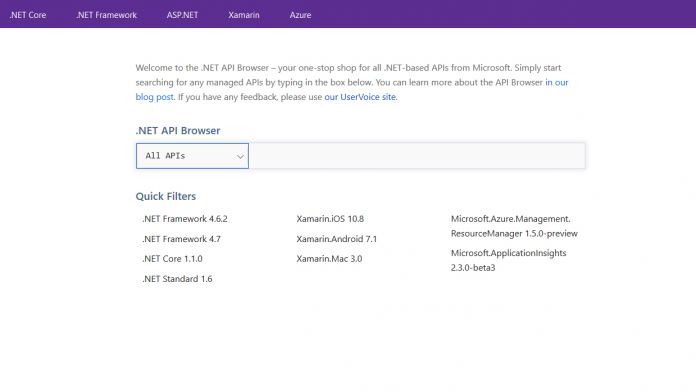The .NET API Browser lets developers search for a class, interface, namespace or method using a simple interface. You don’t even need to know the full name, as the InteliSense-like search completes it automatically. It acts as a hub for documentation, lettings users search through a list of all APIs or specific .NET versions. As such, it’s a great discovery tool for those still learning. It also integrates a table of contents, so that devs can jump between and drill down into the various APIs even if they’re on a different page. Of course, the API browser intelligently displays that information depending on the namespace. Microsoft groups families together to show the most relevant results at all times. What’s more, devs can easily change .NET Framework of NuGet package versions to adjust the documentation to that variant.
Open Source and Xamarin Collaboration
According to Microsoft, the web browser comes through a significant collaboration with Xamarin. “We understand that developer productivity is key – from a hobbyist developer, to a startup, to an enterprise,” writes Jeff Sandquist, general manager for Azure growth and ecosystem. “With that in mind, we partnered closely with the Xamarin team to standardize how we document, discover, and navigate .NET APIs at Microsoft.” The .NET API browser uses an open source DocFX core, alongside the mdoc application by Xamarin. As a result, documentation gets automatically generated from binaries on NuGet or framework distributions. This will let Microsoft maintain accurate documentation with a very fast turnaround. All .NET documentation now uses the ECMXAML format, which brings consistency and lets developers contribute using Markdown. Sandquist says that community contributions will be coming soon, alongside more SDKs over the next couple of months. It’s definitely a step forward in organization, and developers can begin to make use of the .NET API browser today.




